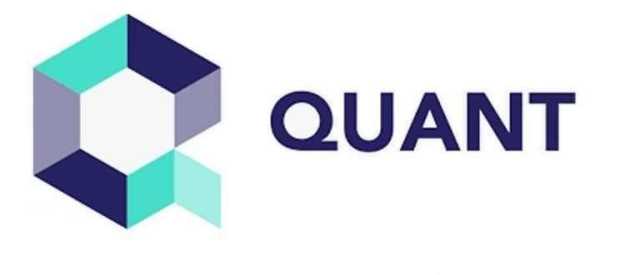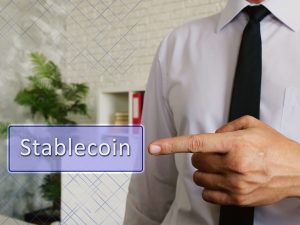
With traditional data storage methods, it can be hard to trace the source of problems, like which vendor poor-quality goods came from. Storing this information on blockchain would make it easier to go back and monitor the supply chain, such as with IBM’s Food Trust, which uses blockchain technology to track food from its harvest to its consumption. In a public blockchain, anyone can participate meaning they can read, write or audit the data on the blockchain. Notably, it is very difficult to alter transactions logged in a public blockchain as no single authority controls the nodes. While any conventional database can store this sort of information, blockchain is unique in that it’s totally decentralized. Rather than being maintained in one location, by a centralized administrator—think of an Excel spreadsheet or a bank database—many identical copies of a blockchain database are held on multiple computers spread out across a network.

Top technical skills for a career in blockchain
To confirm nothing gets tampered with, each block stores the hash of the block before it. That way, if there’s ever a discrepancy between the two places the hash is stored, you’ll know something’s gone wrong (more accurately, your computer will know — you don’t have to manually check the chain yourself). Hashing lets you create a string of characters (called the “hash”) from any piece of data. You put a bunch of data in (an entire block) and get a smaller, unique piece of data out (the hash).

Benefits of Blockchains
- These nodes are in constant communication with one another, keeping the digital ledger up-to-date.
- Several jurisdictions are tightening control over certain types of crypto and other virtual currencies.
- If you decide to get started, you could fully jump in or just dip your toe.
- These theories would come together in 1991, with the launch of the first-ever blockchain product.
- Using blockchain in this way would make votes nearly impossible to tamper with.
Like with every other new, revolutionary technology, there is no one set of standards, and the overall impact is still being discovered. We’ve rounded up 37 interesting examples of US-based companies using blockchain. (2018) IBM develops a blockchain-based banking platform with large banks like Citi and Barclays signing on.
Cboe confirms trading launch of 5 spot Ethereum ETFs on July 23
In addition, every asset is individually identified and tracked on the blockchain ledger, so there is no chance of double spending it (like a person overdrawing their bank account, thereby spending money twice). But really, the difficulty is an important part of the system, because it dictates the security of the block, as well as defining how blocks are made. As we noted before, if you wanted to change a record, you’d both have to recompute the hash for both the block and each subsequent block, as well as win the right to mine each of those blocks. The same is also true for double spends, which is where you try to undo a transaction so you can spend those coins again. The odds of you being able to double spend coins, and then create enough blocks afterward to make a chain long enough to be recognized as legitimate aren’t great.
Secure Transactions
- And the hashes are huge — I’ve been using just a couple of characters as examples, but in general the hashes are 60+ characters long.
- You add this hash to the beginning of another document and type information into it.
- Of course, the records stored in the Bitcoin blockchain (as well as most others) are encrypted.
- But unlike a safe deposit box, crypto users who hold their own private keys and make transactions using non-custodial wallets (i.e., a wallet not hosted by an exchange or other third-party) become their own bank.
- Rather, he wanted SHIB holders and developers to do the marketing themselves, “do something cool,” Kusama said.
How these new blocks are created is key to why blockchain is considered highly secure. A majority of nodes must verify and confirm the legitimacy of the new data before a new block can be added to the ledger. For a cryptocurrency, they might involve ensuring that new transactions in a block were not fraudulent, or that coins had not been spent more than once. This is different from a standalone database or spreadsheet, where one person can make changes without oversight. The original blockchain is the decentralized ledger behind the digital currency bitcoin. The ledger consists of linked batches of transactions known as blocks, with an identical copy stored on each of the roughly 60,000 computers that make up the Bitcoin network.
How the block is mined depends on the model that the blockchain operates on, which we’ll get into in a bit. After a mining node has created a block, it’ll broadcast it out to the world. The other nodes will check to make sure it’s a valid block, then add it to their own ledgers. It’s possible for multiple blocks to be created at once, but eventually the network will end up building more blocks on top of one than the other, making that block part of the official chain. In this example, the receipts are transactions, and the boxes are blocks.
Payment processing and financial transactions
It’s definitely possible that you’re working on a specific problem that just needs blockchain technology! But if it’s that important then, uh, you really shouldn’t just be learning all this! As 2020 showed, that can be hard to do with low-tech systems, much less ones that require explainers crypto and blockchain articles that are, like, a million words long. Blocks are what store data on the blockchain — and it’s up to whoever’s making the blockchain to determine what kind of data they store. I could, if I wanted to, create a blockchain where each block stored the entire text of The Great Gatsby.
What we know about CrowdStrike’s update fail that’s causing global outages and travel chaos
This would eliminate the need for recounts or any real concern that fraud might threaten the election. Even if you make your deposit during business hours, the transaction can still take one to three days to verify due to the sheer volume of transactions that banks need to settle. Blockchains have been heralded as a disruptive force in the finance sector, especially with the functions of payments and banking. Each candidate could then be given a specific wallet address, and the voters would send their token or crypto to the address of whichever candidate they wish to vote for. The transparent and traceable nature of blockchain would eliminate the need for human vote counting and the ability of bad actors to tamper with physical ballots.
Property Records
By the time the hacker takes any action, the network is likely to have moved past the blocks they were trying to alter. This is because the rate at which these networks hash is exceptionally fast—the Bitcoin network hashed at a rate of 566–657 exahashes per second (18 zeros) between May and June 2024. In contrast, in a traditional database, if someone makes a mistake, it may be more likely to go through.
